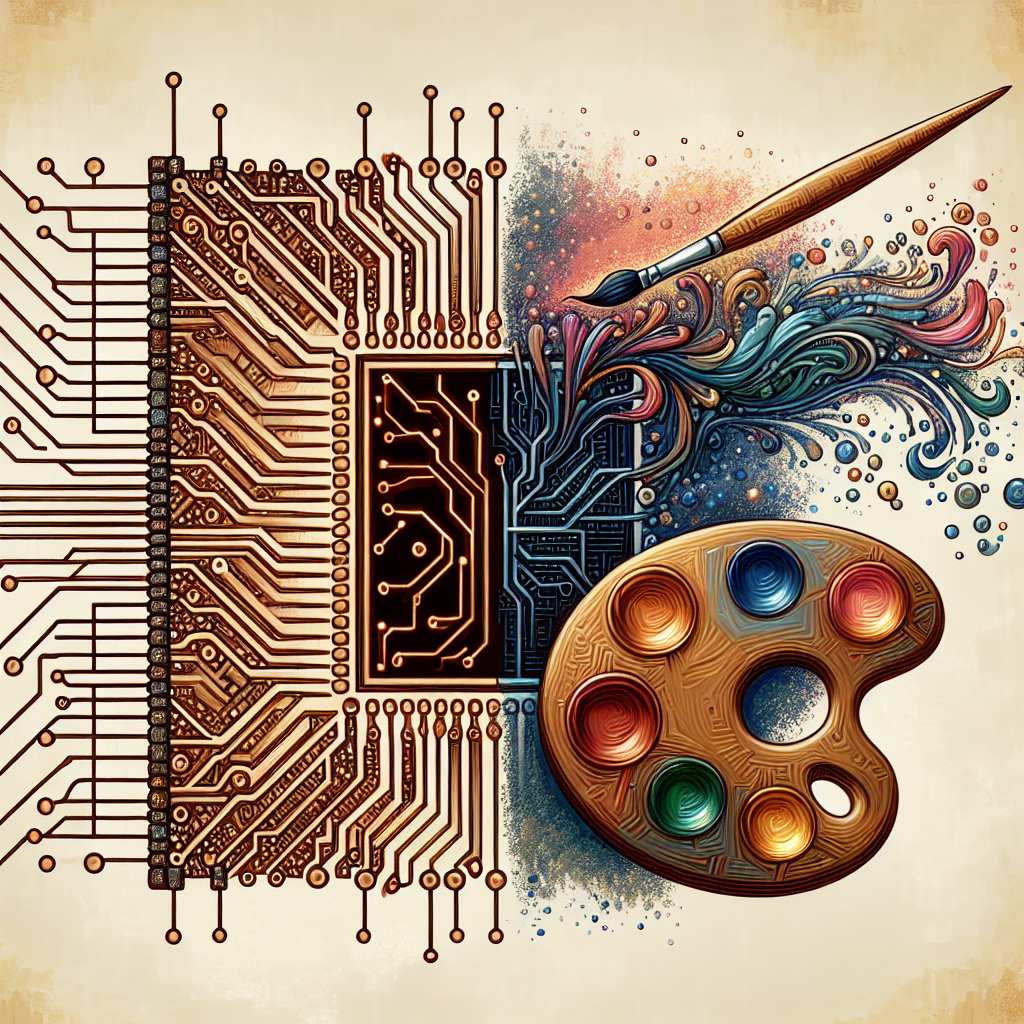Artificial Intelligence (AI) has made significant advancements in recent years, revolutionizing various industries and changing the way we interact with technology. One of the most intriguing areas where AI is making a significant impact is in the world of art. AI and art have become increasingly intertwined, with AI being used to create, analyze, and even appreciate art in ways that were previously unimaginable. This article will explore the connection between AI and art, looking at how technology is influencing and enhancing creativity in the art world.
AI and Art: A Brief Overview
Artificial intelligence refers to the simulation of human intelligence processes by machines, particularly computer systems. AI has the ability to learn, reason, and solve problems, making it a powerful tool in various fields, including art. In the context of art, AI is being used in a variety of ways, from creating new artworks to analyzing existing pieces and even curating exhibitions.
One of the most well-known examples of AI in art is the use of Generative Adversarial Networks (GANs) to create original artworks. GANs are a type of neural network that consists of two networks – a generator and a discriminator – that work together to generate new, realistic images. Artists and researchers have been using GANs to create paintings, drawings, and even music that would be difficult, if not impossible, for a human artist to produce.
AI is also being used to analyze and interpret art in new ways. For example, researchers at the MIT-IBM Watson AI Lab have developed an AI system called “Visual Genomes” that can analyze and describe visual artworks in human-like language. This system has the potential to revolutionize art criticism and art history by providing new insights and interpretations of artworks.
In addition to creating and analyzing art, AI is also being used to curate exhibitions and connect artists with audiences. The Google Arts & Culture platform, for example, uses AI to recommend artworks and exhibitions to users based on their preferences and interests. This allows art lovers to discover new artists and artworks that they may not have encountered otherwise.
The Connection Between Technology and Creativity
The use of AI in art raises important questions about the nature of creativity and the role of technology in the creative process. Some critics argue that AI is a threat to human creativity, as it is capable of producing artworks that are indistinguishable from those created by humans. However, others see AI as a tool that can enhance and expand human creativity, providing new possibilities and opportunities for artists.
One of the key benefits of AI in art is its ability to generate new ideas and inspire artists to think differently. By analyzing vast amounts of data and generating new patterns and styles, AI can push artists out of their comfort zones and encourage them to experiment with new techniques and concepts. This can lead to the creation of innovative and groundbreaking artworks that challenge traditional notions of art.
Another advantage of AI in art is its ability to democratize the creative process. AI can help artists overcome technical limitations and access new tools and resources that would otherwise be out of reach. This can level the playing field for artists of all backgrounds and abilities, allowing them to explore their creative potential and reach new audiences.
FAQs
Q: Can AI truly be creative?
A: While AI can simulate aspects of human creativity, such as generating new ideas and patterns, it is still a tool that relies on human input and guidance. AI can produce artworks that are impressive and innovative, but it lacks the emotional depth and personal expression that are often associated with human creativity.
Q: Is AI a threat to human artists?
A: AI has the potential to disrupt the art world by changing the way artworks are created, analyzed, and consumed. However, many artists see AI as a tool that can enhance their creativity and provide new opportunities for expression. By embracing AI and experimenting with new technologies, artists can push the boundaries of traditional art and explore new possibilities.
Q: How can artists incorporate AI into their practice?
A: There are many ways for artists to incorporate AI into their practice, depending on their interests and goals. Artists can use AI to generate new ideas and inspiration, analyze and interpret artworks, or even create entirely new artworks using GANs and other AI techniques. By experimenting with AI and exploring its capabilities, artists can expand their creative horizons and discover new ways of expressing themselves.
In conclusion, the connection between AI and art is a complex and evolving relationship that is reshaping the way we think about creativity and technology. AI has the potential to revolutionize the art world by providing new tools and opportunities for artists to explore and experiment. By embracing AI and collaborating with machines, artists can push the boundaries of traditional art and create innovative and groundbreaking artworks that challenge our perceptions of creativity. The future of AI and art is an exciting and inspiring journey that promises to redefine the boundaries of human imagination and creativity.

